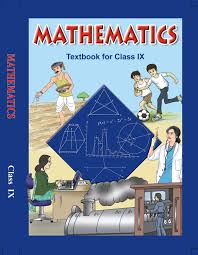Class 9 - Mathematics
Linear Equations in Two Variables - Exercise 4.2

Top Block 1
Exercise 4.2
Question : Which one of the following options is true, and why? y = 3x + 5 has
(i) a unique solution, (ii) only two solutions, (iii) infinitely many solutions
Answer :
Option (iii) is true because a linear equation has an infinitely many solutions. It is because a
linear equation in two variables has many solutions. We keep changing the value of x and solve
the linear equation for the corresponding value of y.
Question : 2: Write four solutions for each of the following equations: (i) 2x + y = 7 (ii) πx + y = 9 (iii) x = 4y
Answer :
(i) 2x + y = 7
When x = 0,
2(0) + y = 7
⇒ 0 + y = 7
⇒ y =7
So, the solution is (0, 7).
When x = 1,
2(1) + y = 7
⇒ y = 7 – 2
⇒ y = 5
So, the solution is (1, 5).
When x = 2,
2(2) + y = 7
⇒ y = 7 – 4
⇒ y = 3
So, the solution is (2, 3).
When x = 3,
2(3) + y = 7
⇒ y = 7 – 6
⇒ y = 1
So, the solution is (3, 1).
(ii) πx + y = 9
When x = 0
π(0) + y = 9
⇒ y = 9 – 0
⇒ y = 9
So, the solution is (0, 9).
When × = 1, π(1) + y = 9
⇒ y = 9 – π
So, the solution is {1, (9 – π)}
When x = 2,
π(2) + y = 9
⇒ y = 9 – 2π
So, the solution is {2, (9 – 2π)}
When × = –1,
π(–1) + y = 9
⇒ -π + y = 9
⇒ y = 9 + π
So, the solution is {–1, (9 + π)}
(iii) x = 4y
When x = 0, 4y = 0
⇒ y = 0
So, the solution is (0, 0).
When x = 1, 4y = 1
⇒ y = 0
So, the solution is (0, 0)
When x = 4,
4y = 4
⇒ y = 4/4
⇒ y = 1
So, the solution is (4, 1)
When x = -4,
4y = -4
⇒ y = -4/4
⇒ y = -1
So, the solution is (4, -1)
Mddle block 1
Question : 3: Check which of the following are solutions of the equation x – 2y = 4 and which are not:
(i) (0, 2) (ii) (2, 0) (iii) (4, 0) (iv) (√2, 4√2) (v) (1, 1)
Answer :
Given, equation is: x – 2y = 4
(i) (0, 2) means x = 0 and y = 2
LHS: x – 2y = 0 – 2 * 2
= 0 – 4
= -4 ≠ RHS
So, (0, 2) is not the solution of given equation.
(ii) (2, 0) means x = 2, y = 0
LHS: x – 2y = 2 – 2 * 0
= 2 – 0
= 2 ≠ RHS
So, (2, 0) is not the solution of given equation.
(iii) (4, 0) means x = 4, y = 0
LHS: x – 2y = 4 – 2 * 0
= 4 – 0
= 4 = RHS
So, (4, 0) is the solution of given equation.
(iv) (√2, 4√2) means x = √2 and y = 4√2
LHS: x – 2y = √2 – 2 * 4√2
= √2 – 8√2
= -6√2 ≠ RHS
So, (√2, 4√2) is not the solution of given equation.
(v) (1, 1) means x = 1, y = 1
LHS: x – 2y = 1 – 2 * 1
= 1 – 2
= -1 ≠ RHS
So, (1, 1) is not the solution of given equation.
Question : 4: Find the value of k, if x = 2, y = 1 is a solution of the equation 2x + 3y = k.
Answer :
Given, x = 2, y = 1 is a solution of the equation 2x + 3y = k
⇒ 2 * 2 + 3 * 1 = k
⇒ 4 + 3 = k
⇒ k = 7
So, the value of k is 7
